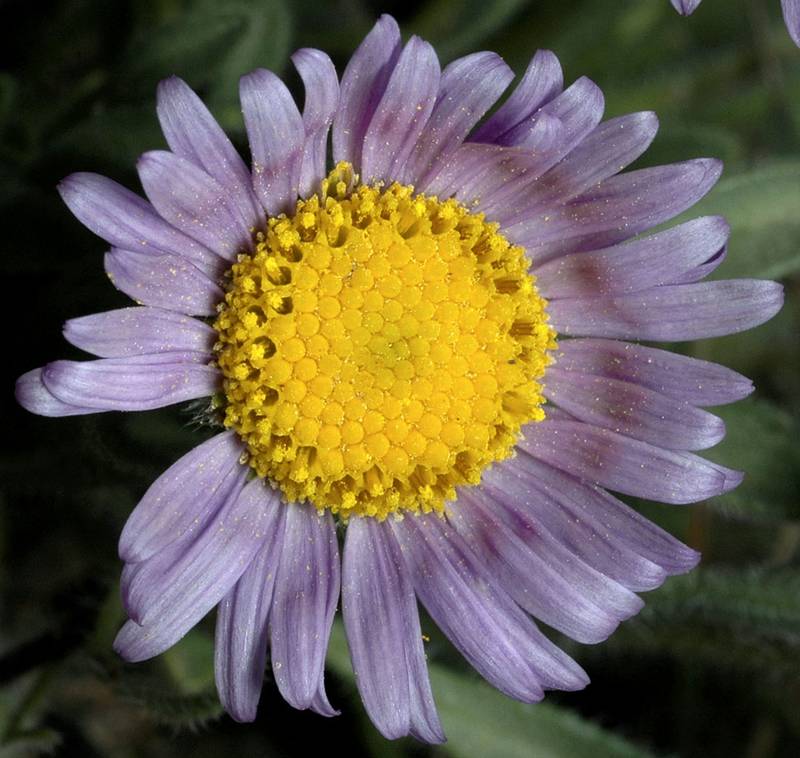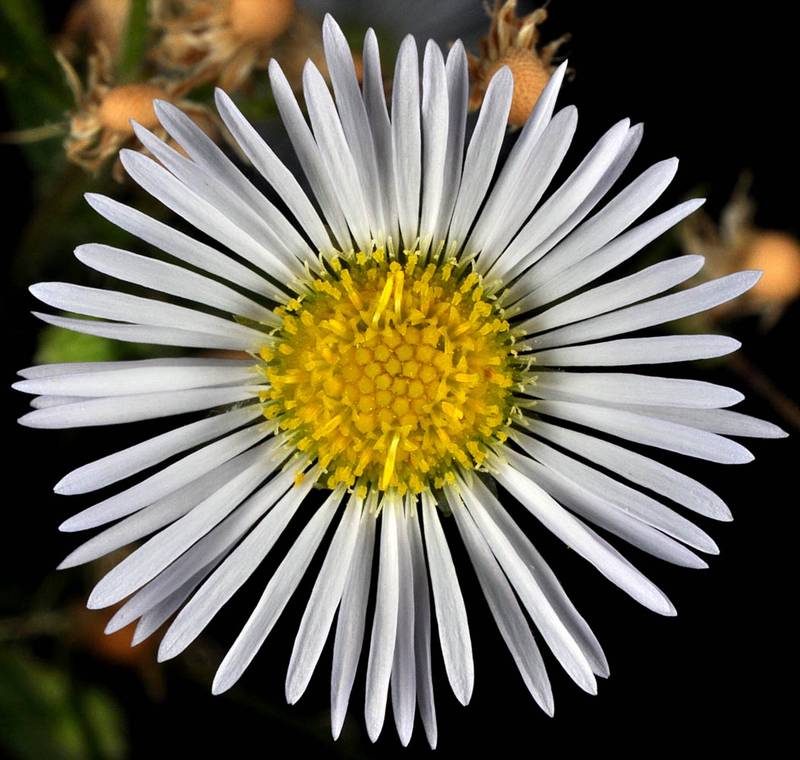Erigeron poliospermus
Erigeron annuus
hairy-seeded daisy, cushion fleabane
annual fleabane, eastern daisy fleabane, sweet scabrous fleabane
Basal leaves linear-oblanceolate to spatulate, up to 8 cm. long and 12 mm. wide, the cauline leaves reduced.
Leaves ample, generally toothed, the cauline leaves broadly lanceolate to ovate.
Heads solitary, hemispheric, the disk 9-20 mm. wide;
involucre 5-9 mm. high;
rays 15-45, pale pink or purple to deep violet, 4-15 mm. long and 1.3-3.6 mm. wide;
pappus of 20-30 capillary bristles.
Inflorescence large and usually leafy;
involucre 3-5 mm. high, finely glandular and sparsely long-hairy;
rays 80-125, white to lavender, 0.5-1 mm. wide and up to 10 mm. long; disk corollas 2-2.8 mm. long;
pappus of 10-15 very fragile bristles and some short, bristly scales, the bristles wanting in the ray flowers.
Achenes densely covered with long, silky hairs.
Erigeron poliospermus
Erigeron annuus
- Local floras:
BC,
OR,
WA
- Local Web sites:
Flora NW,
PNW Herbaria
WildflowerSearch
iNaturalist (observations)
USDA Plants Database
- LBJ Wildflower Center
- SEINet
- Plants of the World Online
- Encyclopedia of Life
- Wikipedia
- Google Image Search
- Local floras:
BC,
CA,
OR,
WA
- Local Web sites:
CalFlora,
CalPhotos,
Flora NW,
PNW Herbaria,
Turner Photog.
WildflowerSearch
iNaturalist (observations)
USDA Plants Database
- LBJ Wildflower Center
- SEINet
- Plants of the World Online
- Encyclopedia of Life
- Wikipedia
- Google Image Search



